#africanhistory365
Text


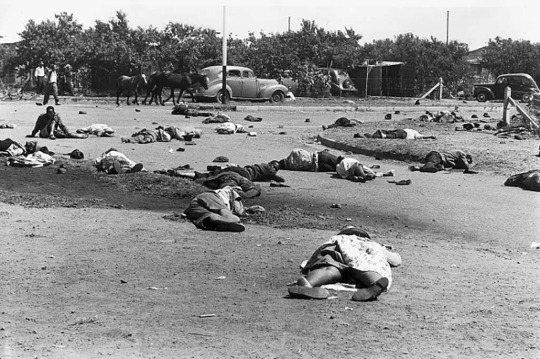

The Sharpeville Massacre occurred on 21st March, 1960, in the township of Sharpeville, South Africa. It resulted in the largest number of South African deaths (up to that point) in a protest against apartheid.
Sharpeville, a black suburb outside of Vereeniging (about 50 miles south of Johannesburg), was untouched by anti-apartheid demonstrations that occurred in surrounding towns throughout the 1950s. By 1960, however, anti-apartheid activism reached the town.
In March 1960, Robert Sobukwe, a leader in the anti-apartheid Pan-Africanist Congress organized the town's first anti-apartheid protest. In order to reduce the possibility of violence, he wrote a letter to the police commissioner to emphasize that it would be non-violent.
On March 21, an estimated 7,000 South Africans gathered in front of the Sharpeville police station to protest against the restrictive pass laws. Nearly 300 police officers arrived to put an end to the peaceful protest.
As they attempted to disperse the crowd, a police officer was knocked down and many in the crowd began to move forward to see what had happened. Police witnesses claimed that stones were thrown, and in a panicked reaction, they opened fire.
As the protesters tried to flee the violent scene, police continued to shoot into the crowd.
The police version, only 69 Africans were killed and 186 were wounded, with most shot in the back.
The Sharpeville Massacre awakened the international community to the horrors of apartheid. The massacre also sparked hundreds of mass protests by black South Africans.
On March 30, the South African government declared a state of emergency which made any protest illegal. The ban remained in effect until August 31, 1960. During those five months roughly 25,000 people were arrested throughout the nation.
The government's repressive measures intensified and expended the opposition to apartheid, ushering in three decades of resistance & protest
With the election of Nelson Mandela as president of South Africa in 1994, the apartheid system ended. In 1994, Mandela signed the nation's first post-apartheid constitution near the site of the 1960 massacre.
•••
La Masacre de Sharpeville sucedió el 21 de marzo de 1960, en el municipio de Sharpeville, Sudáfrica. Resultó en la mayor cantidad de muertes de sudafricanos (hasta ese punto) en un protesta en contra de la segregación racial.
Sharpeville, un suburbio habitado por personas negras en las afueras de Vereeniging (cincuenta millas al sur de Johannesburg), había permanecido intacto de las demostraciones anti-segregadoras que estaban ocurriendo en ciudades cercanas a lo largo de los 1950. En 1960, el activismo anti segregacionista llegó a la ciudad.
En marzo de 1960, Robert Sobukwe, un lider del Congreso Panafricano Anti-Segregacionista organizó la primera protesta anti segregacional. Para poder reducir la posibilidad de violencia, le escribió una carta al comisionado de la policía para enfatizar que seria una protesta pacífica.
El 21 de marzo, alrededor de 7,000 sudafricanos se reunieron en frente de la estación policial de Sharpeville para protestar en contra de las leyes restrictivas de paso (desplazamiento). Alrededor de 300 policías llegaron para poner fin a la protesta.
Mientras intentaban dispersar a la multitud, un oficial de policía fue derribado y muchos en la multitud comenzaron a acercarse para ver qué había sucedido. Testigos policiales afirmaron que se arrojaron piedras y, en una reacción de pánico, abrieron fuego. Mientras los protestantes estaban tratando de huir de la escena violenta, la policía siguió disparando contra la multitud.
Según la versión policial, 69 africanos fueron asesinados y 186 resultaron heridos, la mayoría disparados en la espalda.
La Masacre de Sharpeville despertó a la comunidad internacional a los horrores de la segregación racial. La masacre también provocó cientos de protestas masivas de sudafricanos negros.
El 30 de marzo, el gobierno sudafricano declaró un estado de emergencia, lo cual hizo que cualquier protesta fuese ilegal. La prohibición duró hasta el 31 de agosto de 1960. Durante esos cinco meses alrededor de 25,000 personas fueron arrestadas a lo largo de la nación.
Las medidas represivas del gobierno intensificaron y expandieron la oposición a la segregación racial, dando paso a tres décadas de resistencia y protesta.
Con la elección de Nelson Mandela como presidente de Sudáfrica en 1994, el sistema segregacional terminó. En 1994, Mándela firmó la primera constitución post segregación racial, cerca del lugar donde sucedió la masacre del año 1960.
#blacklivesmatter#blacklivesalwaysmatter#english#spanish#blackhistory#history#share#read#blackpeoplematter#blackhistorymonth#black history matters#black history#black history is world history#africanhistory365#africanhistory#black history 2023#historyfacts#black history is everybody's history#black history 365#blackhistoryfacts#blackhistoryeveryday#blackhistoryyear#black history month#knowyourhistory#like#follow#blackbloggers#blackownedandoperated#south africa#nelson mandela
93 notes
·
View notes
Photo

Benjamin Sterling Turner (March 17, 1825 – March 21, 1894) was a businessman and politician who served in the House of Representatives representing Alabama's 1st congressional district in the 42nd Congress. He engaged in mercantile pursuits and set up a livery stable in Selma. In the 1870 Census, he reported an estate worth $10,000. He joined the Republican Party after the Civil War and was elected tax collector of Dallas County in 1867. He served as councilman of the city of Selma in 1869. Freedmen were granted voting rights after the Civil War. He was unanimously nominated to be the Republican candidate from Alabama's 1st congressional district, which at that point encompassed Southwest Alabama. He was elected as a Republican to the Forty-second Congress (March 4, 1871 - March 3, 1873). He complained that northern Republicans living in his district had not supported him enough in his run for office. He worked to restore political and legal rights to Confederates who had fought against the US in the ACW. He fought for the repeal of the tax on cotton because it hurt poor African Americans. He was elected in 1880 as a delegate to the RNC. After his political career, he engaged in agricultural pursuits. #africanhistory365 #africanexcellence https://www.instagram.com/p/Cp42kfdL1Cd/?igshid=NGJjMDIxMWI=
50 notes
·
View notes
Text

Black people did not "come to this country seeking a better life."
They were kidnapped from their homes in Africa, dragged in chains and loaded onto slave ships. Treated not like human beings but like things, commodities to be traded and used to enrich others.
Tens of millions of enslaved Africans died before even reaching America, so terrible were the conditions on the slave ships. Those who survived the trip and were then sold to plantation owners.
•••
Las personas negras no llegaron a este país “buscando una mejor vida”.
Fueron secuestrados de sus hogares en África, fueron arrastrados con cadenas y puestos en barcos de esclavos. No se les trataba como seres humanos sino como cosas, mercancía para comercializar y los utilizaban para enriquecer a otros.
Tan terribles eran las condiciones en los barcos de esclavos que decenas de millones de africanos esclavizados murieron antes de llegar a América. Los que sobrevivieron al viaje fueron vendidos a dueños de plantaciones.
#blacklivesmatter#blacklivesalwaysmatter#english#spanish#blackhistory#history#share#read#blackhistorymonth#blackpeoplematter#africanhistory365#african history#knowyourhistory#historyfacts#blackbloggers#blackownedandoperated#black blogger#black tumblr#black history is american history#blackhistoryyear#black history#black history month#black history is world history#black history 2023#black history matters#black history is everybody's history#black lives matter#africanhistory#slavery#enslaved
38 notes
·
View notes
Text


On February 18th 1957, Kenyan freedom fighter, Dedan Kimathi, was executed by the British. He led the KLFA (MauMau) revolution against the brutal British occupation of his country.
Dedan Kimathi, was hanged at dawn at Kamiti, just over 48 hours after his leave of appeal had been rejected by the Privy Council.
He was executed on a charge of carrying a revolver, which, under the Emergency Regulations, was punishable by death.
The basis of Kimathi's request for leave of appeal at the Privy Council was that he was on his way to surrender, and was not in fact "captured."
He also revealed that he was taking in his arms as was required of those who surrendered. The judges, however, rejected this without hearing his lawyer, describing them as "lies”.
Kimathi went calmly to his death and was described by a senior prison official who was present at the execution as a model prisoner. "To the last he was composed and quiet," he said.
At his own request, a Roman Catholic priest spent the whole night with him in his cell.
Although many African leaders were hesistant to condemn the execution out of fear of being labelled Mau Mau sympathisers, anti colonial activists from different parts of the world were quite forthright in their criticism.
“I don’t lead terrorists. I lead Africans who want their self government and land.” — D. Kimathi
•••
El 18 de febrero de 1957, un combatiente por la libertad de Kenia, Dedan Kimathi, fue ejecutado por los británicos. Lideró la revolución KLFA (Mau Mau) contra la brutal ocupación británica de su país.
Dedan Kimathi, fue ahorcado al amanecer en Kamiti, justo más de 48 horas después de que el Consejo Privado rechazara su permiso de apelación.
Fue ejecutado por el cargo de portar una revólver que, según el Reglamento de Emergencia, se castigaba con la muerte.
La solicitud del permiso de apelación de Kimathi ante el Consejo Privado estaba basada en que estaba en camino a rendirse y, de hecho, no fue "capturado".
También reveló que estaba llevando sus armas, ya que era requisito para aquellos que se rendían. Los jueces, sin embargo, rechazaron esto sin escuchar a su abogado, calificándolo como “mentiras".
Kimathi se dirigió tranquilamente a su muerte y un alto funcionario penitenciario que estuvo presente en la ejecución lo describió como un prisionero modelo. "Hasta el final estuvo sereno y tranquilo", dijo.
Por petición propia, un sacerdote católico romano pasó toda la noche con él en su celda.
Aunque muchos líderes africanos dudaron en condenar la ejecución por temor a ser etiquetados como simpatizantes de los Mau Mau, los activistas anticoloniales de diferentes partes del mundo fueron bastante directos en sus críticas.
“Yo no dirijo terroristas. Dirijo a los africanos que quieren su propio gobierno y su tierra”. — D. Kimathi
#blacklivesmatter#blacklivesalwaysmatter#english#spanish#blackhistory#history#share#read#blackpeoplematter#blackhistorymonth#blackheroesmatter#hero#africanheritage#africanhistory365#africanhistory#kenya#knowyourhistory#knowlegde#black history matters#historyfacts#black history is world history#black history 2023#black history month#british invasion#like#follow#newpost#blackleaders#blackownedandoperated#culture
94 notes
·
View notes
Photo
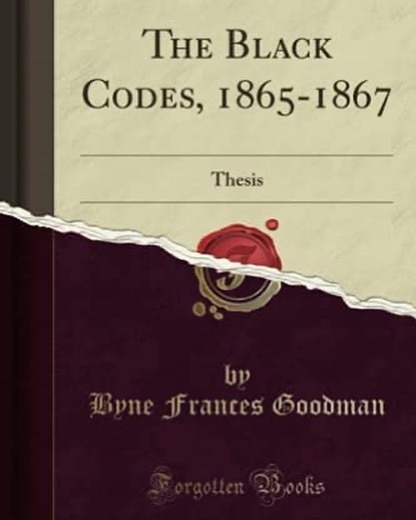
The Black Codes sometimes called Black Laws, were laws governing the conduct of African Americans. The best known of them were passed on November 22, 1865, and in 1866 by Southern states, after the American Civil War, to restrict African Americans' freedom and compel them to work for low wages. Black Codes existed before the Civil War, and many Northern states had them. In 1832, "in most of the US, there is a distinction in respect to political privileges, between free white persons and free colored persons of African blood; and in no part of the country do the latter participate equally with the whites, in the exercise of civil and political rights." Black Codes were part of a larger pattern of whites trying to maintain political dominance and suppress the freedmen, newly emancipated African-American slaves. Black codes were replacements for slave codes in those states. Before the war, Northern states that had prohibited slavery also enacted Black Codes: CT, OH, IL, IN, MI, and NY enacted laws to discourage free African Americans from residing in those states. They were denied equal political rights, including the right to vote, the right to attend public schools, and the right to equal treatment under the law. Some of the Northern states repealed such laws around the same time that the Civil War ended and slavery was abolished by constitutional amendment. Colonies and states had passed laws that discriminated against free African Americans. In the South, these were generally included in "slave codes"; the goal was to reduce the influence of free African Americans because of their potential influence on slaves. Restrictions included prohibiting them from voting, bearing arms, gathering in groups for worship, and learning to read and write. A major purpose of these laws was to preserve slavery in slave societies. The term Black Codes was given by "negro leaders and the Republican organs", according to historian John S. Reynolds. The defining feature of the Black Codes was broad vagrancy law, which allowed local authorities to arrest freed people for minor infractions and commit them to involuntary labor. #africanhistory365 #africanexcellence https://www.instagram.com/p/ClQuTvcLIgB/?igshid=NGJjMDIxMWI=
108 notes
·
View notes
Photo

Lupita Amondi Nyong'o (March 1, 1983) is a Kenyan-Mexican actress. The daughter of Kenyan politician Peter Anyang' Nyong'o, she was born in Mexico City, where her father was teaching, and was raised in Kenya from the age of one. She is the recipient of several accolades, including an Academy Award, a Daytime Emmy Award, four NAACP Image Awards, and two Screen Actors Guild Awards. She has been nominated for a Primetime Emmy Award and a Tony Award. She attended college in the US, earning a BFA in Film and Theatre from Hampshire College. She began her career in Hollywood as a production assistant. In 2008, she made her acting debut with the short film East River and returned to Kenya to star in the television series Shuga. She wrote, produced, and directed the documentary In My Genes. She then pursued an MFA in acting from the Yale School of Drama. She had her first feature film role as Patsey in 12 Years a Slave, for which she received critical acclaim and won the Academy Award for Best Supporting Actress. She is the first Mexican actress to win an Academy Award. She made her Broadway debut as a teenage orphan in the play Eclipsed, for which she was nominated for a Tony Award for Best Actress in a Play. She went on to perform a motion capture role as Maz Kanata in the Star Wars sequel trilogy and a lead voice role as Raksha in The Jungle Book. Her career progressed with her role as Nakia in Black Panther and her starring role in the US. She supports historic preservation. She is vocal about preventing sexual harassment and working for women's and animal rights. She was named the most beautiful woman by People. She wrote a children's book named Sulwe, which became a number-one New York Times Best-Seller. She narrated the docu-series Serengeti, which earned her a Primetime Emmy Award nomination for Outstanding Narrator. She was named one of Africa's "50 Most Powerful Women" by Forbes. #africanhistory365 #africanexcellence #womenhistorymonth https://www.instagram.com/p/CpP0R4WLXja/?igshid=NGJjMDIxMWI=
40 notes
·
View notes
Text
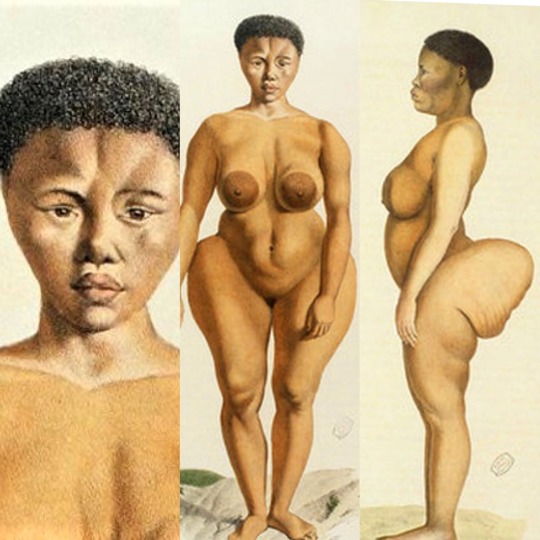
Sara 'Saartjie' Baartman was born in 1789 at the Gamtoos river in what is now known as the Eastern Cape. She belonged to the cattle-herding Gonaquasub group of the Khoikhoi. Sara grew up on a colonial farm where her family most probably worked as servants. Her mother died when she was aged two and her father, who was a cattle driver, died when she reached adolescence.
Sara married a Khoikhoi man who was a drummer and they had one child together who died shortly after birth.
Due to colonial expansion, the Dutch came into conflict with the Khoikhoi. As a result people were gradually absorbed into the labour system. When she was sixteen years old Sara's fiancé was murdered by Dutch colonists.
Soon after, she was sold into slavery to a trader named Pieter Willem Cezar, who took her to Cape Town where she became a domestic servant to his brother. It was during this time that she was given the name 'Saartjie', a Dutch diminutive for Sara.
On 29 October 1810, Sara allegedly 'signed' a contract with an English ship surgeon named William Dunlop who was also a friend of Cezar and his brother Hendrik.
Apparently, the terms of her 'contract were that she would travel with Hendrik, Cezar and Dunlop to England and Ireland to work as a domestic servant, and be exhibited for entertainment purposes. She was to receive a 'portion of earnings from her exhibitions and be allowed to return to South Africa after five years. Two reasons make her 'signing' appear dubious. The first is that she was illiterate and came from a cultural tradition that did not write or keep records. Secondly, the Cezar families experienced financial woes and it is suspected that they used Sara to earn money.
Sara Baartman's large buttocks and unusual colouring made her the object of fascination by the colonial Europeans who presumed that they were racially superior. Dunlop wanted Sara to come to London and become an oddity for display. She was taken to London where she was displayed in a building in Piccadilly, a street that was full of various oddities like “the ne plus ultra of hideousness" and "the greatest deformity in the world". Englishmen and women paid to see Sara's half naked body displayed.
Sara ‘Saartjie’ Baartman died in Paris on December 29, 1815 at the age of 26 for unknown reasons. Even after her death, many of her body parts would go on display at the Musée de l’Homme (Museum of Man), in Paris to support racist theories about people of African ancestry. Some of the body parts remained on display until 1974.
In 1994 South African President Nelson Mandela formally requested that Baartman’s remains be returned to South Africa. On March 6, 2002, her remains were returned and buried at Hankey in the Eastern Cape Province.
•••
Sara “Saartjie” Baartman, nació en el año 1789 cerca del Río Gaamtoos, hoy en día conocido como Cabo Oriental. Ella pertenecía a un grupo de los Khoikhoi que se dedicaba a pastorear ganado, los Gonaquasub. Sara creció en una granja colonial, lo más probable es que su familia solían ser sirvientes en esta granja. Su madre falleció cuando ella tenía dos años y su padre, quien era un pastor ganadero, murió cuando ella llegó a la adolescencia.
Sara se casó con un hombre Khoikhoi que era percusionista y tuvieron un hijo juntos, pero falleció poco después de nacer.
Debido a la expansión colonial, los Holandeses entraron en conflicto con los Khoikhoi. Cómo resultado, las personas fueron absorbidas gradualmente por el sistema laboral. Cuando Sara tenía 15 años, su prometido fue asesinado por colonizadores holandeses.
Poco después, fue vendida en esclavitud a un comerciante llamado Pieter Willem Cezar, quién la llevó a la Ciudad del Cabo, dónde se convirtió en sirvienta doméstica para el hermano de él. Fue durante este tiempo que se le había dado el nombre de “Saartjie”, un diminutivo de Sara en holandés.
El 29 de octubre de 1810, presuntamente Sara había firmado un contrato con el cirujano de un barco, su nombre era William Dunlop, quién era amigo de Cezar y su hermano, Hendrik.
Aparentemente, los términos de su contrato era que viajaría con Hendrik, Cezar y Dunlop a Inglaterra e Irlanda para trabajar como sirvienta doméstica y ser exhibida con propósitos de entretenimiento. Ella recibiría “una porción de las ganancias de sus exhibiciones y se le permitiría regresar a Sudáfrica después de cinco años.” Hay dos razones por las cuales esta firma es dudosa. La primera es porque Sara era analfabeta y venía de una tradición cultural en dónde no se sabía escribir, tampoco mantenían expedientes. La segunda es porque Cezar y su familia estaban pasando por dificultades financieras y se sospecha que estaban utilizando a Sara para ganar dinero.
Los grandes glúteos de Sara Baartman y su color inusual la convirtieron en un objeto de fascinación por parte de los europeos coloniales que presumían ser racialmente superiores. Dunlop quería que Sara fuera a Londres y que se convirtiera en una exhibición de rareza. Ella fue llevada a Londres y fue exhibida en un edificio en Piccadilly, una calle que estaba llena de varias rarezas, como: “el hombre más horrible” y “la deformidad más grande del mundo”. Los ingleses, tanto hombres como mujeres, pagaban por ver el cuerpo desnudo de Sara.
Sara ‘Saartjie' Baartman murió en Paris el 29 de diciembre de 1815 a la edad de 26 años, por causas desconocidas. Incluso después de su muerte, muchas partes de su cuerpo fueron exhibidas en Musée de l’Homme (Museo del Hombre) en Paris, para apoyar las teorías racistas acerca de la genealogía africana. Algunas de las partes de su cuerpo siguieron en exhibición hasta el año 1974.
En 1994, el presidente Sudáfricano Nelson Mandela, solicitó formalmente que los restos de Baartman fueron regresados a Sudáfrica. El 6 de marzo del 2002, sus restos fueron regresados y fue enterrada en Hankey, una provincia ubicada en Cabo Oriental.
#blacklivesmatter#blacklivesalwaysmatter#english#spanish#blackhistory#history#share#read#blackpeoplematter#blackhistorymonth#knowyourhistory#culture#like#historyfacts#follow#blackwomenmatter#blackbloggers#black women#nelson mandela#africanhistory365#black history#black history is american history#african history#blm#newpost#black women matter#blackownedandoperated#blackhistoryyear#black woman#london
48 notes
·
View notes
Photo

Benjamin Tucker Tanner (December 25, 1835 – January 14, 1923) was an African American clergyman and editor. He served as a Bishop in the AME Church and founded the Christian Recorder, an important early African American newspaper. He studied for five years at Avery College, paying his expenses by working as a barber. He then studied for three years at Western Theological Seminary. He was appointed to Sacramento by Bishop Daniel A. Payne, but he could not afford to go, so he moved to DC where he organized a Sunday School for freed slaves in the Navy Yard. He became the pastor of a church in Georgetown. He was appointed principal of the Annual Conference School at Fredericktown, MD, and he organized a common school under the auspices of the Freedmen's Bureau. He was elected chief secretary of the general conference of the AME church and founded and became editor of the church newspaper, the Christian Recorder. He was given an AM by Avery College and he was given an honorary DD by Wilberforce University. He was made editor of the AME Review, and he was the author of several books and pamphlets, including: 'Apology for African Methodism;' 'The Negro's Origin; and Is He Cursed of God,' 'An Outline of our History and Government;' 'The Negro, African and American.' In 1889, he focused on missionary work in Haiti. He was a participant in the March 5, 1897 meeting to celebrate the memory of Frederick Douglass which founded the American Negro Academy led by Alexander Crummell. He was a participating member of this first major African American learned society, which was led by scholars, activists, editors, and bishops like him. It refuted racist scholarship, promoted African American claims to individual, social, and political equality, and studied the history and sociology of African American life. He was the father of artist Henry Ossawa Tanner and the grandfather of Delta Sigma Theta Sorority Founder Sadie Tanner Mossell Alexander. #africanhistory365 #africanexcellence https://www.instagram.com/p/CmmS46XLcXf/?igshid=NGJjMDIxMWI=
37 notes
·
View notes
Photo

Camille Simoine Winbush (born February 9, 1990) is an actress and recording artist known for her roles as Emma Aimes on Minor Adjustments, Vanessa Thomkins on The Bernie Mac Show, and as Lauren Treacy on The Secret Life of the American Teenager. Her work in television has earned her three Image Awards and a Young Artist Award. She was born in Los Angeles, the only child of Anthony and Alice Winbush. She never attended public school, having been homeschooled and educated by an on-set tutor while acting as a child. She was a competitive gymnast during her childhood. She made her acting debut on the television series Viper in 1994, playing the role of Lucy Wilkes. The following year, she acted in her first film, Dangerous Minds. She reprised her role of Emma on Brotherly Love in a Halloween episode. She portrayed a young girl named Camille in Eraser (1996) and appeared as Pearline, a bookworm, in Ghost Dog: The Way of the Samurai (1999). She had a recurring role on 7th Heaven and provided the voice of Ashley Tomossian on Recess. She has guest starred on Strong Medicine, Criminal Minds, That's Life, The Norm Show, NYPD Blue, and Any Day Now. In 2007, she appeared in an episode of Grey's Anatomy. She acted in the musical production of Geppetto. She was cast as Miriam in the web series The Choir. She provided the voice of Rhonda in Children of Ether and portrayed Syrena in Cannon Busters. In 2002, she recorded "One Small Voice" and "The Night Before Christmas Song" for the compilation album School's Out! Christmas. She sang on the soundtrack of Geppetto. As a teenager, she operated an ice cream shop she named Baked Ice, located in Pasadena. It opened in 2003 and an aunt supervised the store when she was unavailable. She received a Teenpreneur Award from Black Enterprise in 2004. The business was still extant as of 2005. #africanhistory365 #africanexcellence https://www.instagram.com/p/CocXfa-LLyk/?igshid=NGJjMDIxMWI=
18 notes
·
View notes
Photo
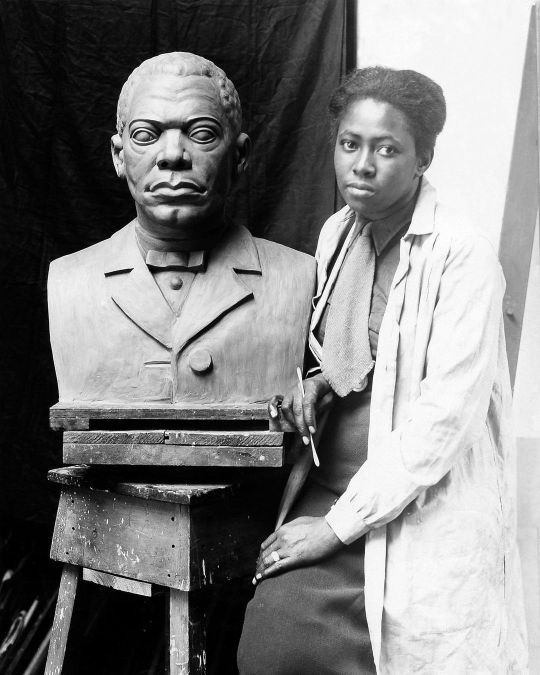
Selma Hortense Burke (December 31, 1900 – August 29, 1995) was a sculptor and a member of the Harlem Renaissance movement. She is known for a bas relief portrait of President Franklin D. Roosevelt that inspired the profile found on the obverse of the dime. She described herself as "a people's sculptor" and created many pieces of public art, often portraits of prominent African-American figures like Duke Ellington, Mary McLeod Bethune, and Booker T. Washington. She was awarded the Women's Caucus for Art Lifetime Achievement Award. She became involved with the Harlem Renaissance cultural movement through her relationship with the writer Claude McKay, with whom she shared an apartment in the Hell's Kitchen neighborhood. She began teaching for the Harlem Community Arts Center under the leadership of sculptor Augusta Savage and would go on to work for the Works Progress Administration on the New Deal Federal Art Project. One of her WPA works, a bust of Booker T. Washington, was given to Frederick Douglass High School in Manhattan. She traveled to Europe twice in the 1930s, first on a Rosenwald fellowship to study sculpture in Vienna. She returned to study in Paris with Aristide Maillol. While in Paris she met Henri Matisse, who praised her work. One of her most significant works from this period is "Frau Keller", a portrait of a German-Jewish woman in response to the rising Nazi threat which would convince her to leave Europe later that year. With the onset of WWII, she chose to work in a factory as a truck driver for the Brooklyn Navy Yard. She returned to the US and won a scholarship for Columbia University, where she would receive an MFA. #africanhistory365 #africanexcellence #deltasigmatheta https://www.instagram.com/p/Cm1U_72rr7A/?igshid=NGJjMDIxMWI=
22 notes
·
View notes
Photo

Robert Calvin Bland (Robert Calvin Brooks; January 27, 1930 – June 23, 2013), known professionally as Bobby "Blue" Bland, was a blues singer. He developed a sound that mixed gospel with the blues and R&B. He was described as "among the great storytellers of blues and soul music... [who] created tempestuous arias of love, betrayal, and resignation, set against roiling, dramatic orchestrations, and left the listener drained but awed." He was sometimes referred to as the "Lion of the Blues" and as the "Sinatra of the Blues". His music was influenced by Nat King Cole. He was inducted into the Blues Hall of Fame in 1981, the Rock and Roll Hall of Fame in 1992, and the Memphis Music Hall of Fame in 2012. He received the Grammy Lifetime Achievement Award in 1997. The Rock and Roll Hall of Fame described him as "second in stature only to B.B. King as a product of Memphis' Beale Street blues scene." #africanhistory365 #africanexcellence https://www.instagram.com/p/Cn6wkepriNF/?igshid=NGJjMDIxMWI=
16 notes
·
View notes
Photo
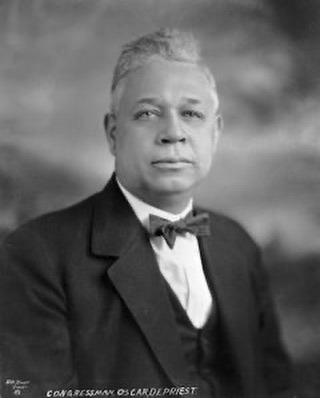
Oscar Stanton De Priest (March 9, 1871 – May 12, 1951) was a politician and civil rights advocate from Chicago. A member of the Illinois Republican Party he was the first African American to be elected to Congress in the 20th century. During his three terms, he was the only African American serving in Congress. He served as a Representative from IL’s 1st congressional district from 1929-1935. He was the first African-American Representative from outside the south, the first since the Reconstruction Era, and the first since the exit of NC representative George Henry White from Congress in 1901. Born in Alabama to freedmen parents, De Priest was raised in Dayton. He studied business and made a fortune in Chicago as a contractor, and in real estate and the stock market before the Crash. A successful local politician, he was elected to the Chicago City Council in 1914, the first African American to hold that office. In Congress in the early 1930s, he spoke out against racial discrimination, including at speaking events in the South; tried to integrate the House public restaurant; gained passage of an amendment to desegregate the Civilian Conservation Corps, one of the work programs under President Franklin D. Roosevelt's New Deal; and introduced anti-lynching legislation to the House. He returned to Chicago and his successful business ventures, returning to politics when he was again elected Chicago alderman in the 1940s. He married the former Jessie L. Williams. They had two sons together. #africanhistory365 #africanexcellence https://www.instagram.com/p/CpkRb1oLzX0/?igshid=NGJjMDIxMWI=
14 notes
·
View notes
Photo
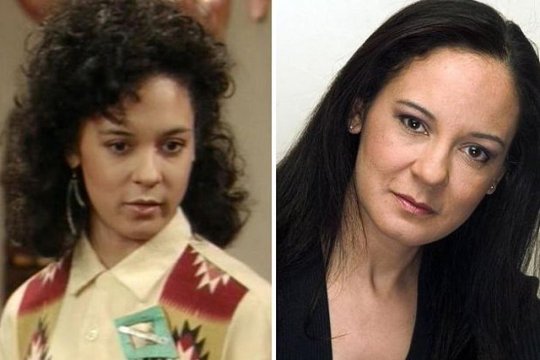
Sabrina Marie Le Beauf (born March 21, 1958) is an actress best known for her portrayal of Sondra Huxtable on The Cosby Show. She has voiced the character Norma Bindlebeep on Fatherhood, a show based on Bill Cosby's book of the same name. After high school she attended UCLA, earning her BA in Theater. During her time at UCLA she became frustrated by the lack of parts offered to African American students, and in response formed a Black students' theater group to allow them to put on their shows. She began graduate work at the Yale School of Drama, where she earned her MA in Acting. She was born in New Orleans, her family moved to Los Angeles soon after her birth. She appeared in the series Hotel and the TV movie Howard Beach: Making a Case for Murder. She had brief appearances as bridge officer Ensign Giusti on two episodes of Star Trek: The Next Generation and on the comedy The Sinbad Show. She continued her work in the theater, starring as Rosalind in a production of Shakespeare's "As You Like It." She is a frequent leading lady performing with the Shakespeare Theatre Company in DC. She recently portrayed Katherine in The Taming of the Shrew with the Company in DC. She appeared in the off-broadway play “LOVE, LOSS AND WHAT I WORE” which ran from 2009-2012. Young Artist Awards 1989: Best Young Actor/Actress Ensemble in a Television Comedy, Drama Series, or Special The Cosby Show. She married businessman and producer Michael Reynolds (1987-1997). #africanhistory365 #africanexcellence #womenshistorymonth https://www.instagram.com/p/CqDIuQ5sdBJ/?igshid=NGJjMDIxMWI=
11 notes
·
View notes
Photo
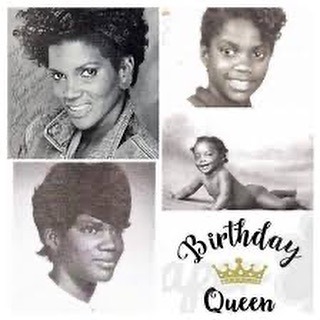
Anna Maria Horsford (born March 6, 1948) is an actress, known for her performances in television comedies. She is known for her roles as Thelma Frye on Amen (1986–91), and as Dee Baxter on The Wayans Bros. (1995–99). She had dramatic roles on The Shield playing A.D.A. Beth Encardi and on The Bold and the Beautiful as Vivienne Avant, for which she was nominated for a Daytime Emmy Award for Outstanding Special Guest Performer in a Drama Series. She appeared in several movies, most notably as Craig Jones' mother Betty in Friday and its sequel Friday After Next. Her other film credits include Times Square (1980), The Fan (1981), Presumed Innocent (1990), Set It Off (1996), Along Came a Spider (2001), Our Family Wedding (2010), and A Madea Christmas (2013). She was born in Harlem to Victor Horsford, an investment real estate broker originally from the Dominican Republic, and Lillian Agatha Horsford, who emigrated from Antigua and Barbuda in the 1940s. She grew up in a family of five children. She is married to Daniel Wolf. On October 29, 2011, she was awarded the title of Ambassador of Tourism of Antigua. #africanhistory365 #africanexcellence #sigmagammarho #womenhistorymonth https://www.instagram.com/p/CpcjmmwrSyK/?igshid=NGJjMDIxMWI=
17 notes
·
View notes
Photo

The Bureau of Refugees, Freedmen, and Abandoned Lands, usually referred to as simply the Freedmen's Bureau, was a US government agency from 1865 to 1872, after the Civil War, to direct "provisions, clothing, and fuel ... for the immediate and temporary shelter and supply of destitute and suffering refugees and freedmen and their wives and children." The Freedmen's Bureau Bill, which established the Freedmen's Bureau on March 3, 1865, was initiated by President Abraham Lincoln and was intended to last for one year after the end of the Civil War. The Freedmen's Bureau was an important agency of early Reconstruction, assisting freedmen in the South. The Bureau was made a part of the US Department of War, as it was the only agency with an existing organization that could be assigned to the South. Headed by Union Army General Oliver O. Howard. In its first year, its representatives found its tasks to be very difficult, partly because Southern legislatures passed laws for Black Codes that restricted movement, conditions of labor, and other civil rights of African Americans, nearly duplicating conditions of slavery. The Freedmen's Bureau controlled a limited amount of arable land. #africanhistory365 #africanexcellence https://www.instagram.com/p/CpU95FUrq9x/?igshid=NGJjMDIxMWI=
12 notes
·
View notes
Photo
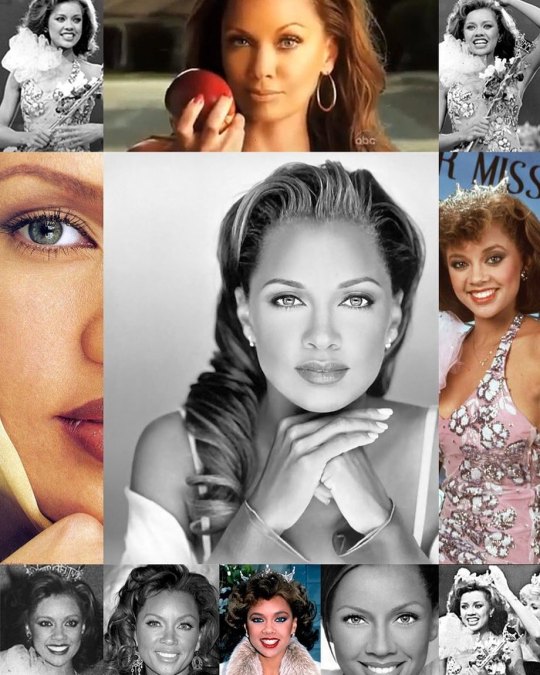
Vanessa Lynn Williams (born March 18, 1963) is a singer, actress, and fashion designer. She gained recognition as the first woman of African-American descent to receive the Miss America title when she was crowned Miss America in 1984. A scandal arose the following year when, a few weeks before the end of her reign, she learned that Penthouse magazine would be publishing now "iconic" unauthorized nude photographs of her in an upcoming issue. She resigned as Miss America in July 1984 and was replaced by the first runner-up Miss New Jersey Suzette Charles. Thirty-two years later, Miss America CEO Sam Haskell offered her a public apology. She rebounded from the scandal with a successful career as a singer and actress. She released her debut studio album The Right Stuff whose title single saw moderate success before "Dreamin'" peaked at number 8 on the Billboard Hot 100 singles chart in the US. With her second and third studio albums, The Comfort Zone and The Sweetest Days, she saw continued commercial success and received multiple Grammy Award nominations—this included her number-one hit and signature song, "Save the Best for Last". Her later studio albums include Everlasting Love and The Real Thing. She enjoyed success on both stage and screen, receiving an NAACP Image Award for Outstanding Actress in a Motion Picture for her portrayal of Teri Joseph in Soul Food. Her best-known television roles are that of Wilhelmina Slater on Ugly Betty, for which she was nominated three times for the Primetime Emmy Award for Outstanding Supporting Actress in a Comedy Series, and Renee Perry on Desperate Housewives. She is involved with several humanitarian causes. She is a supporter of LGBT rights and same-sex marriage, and in 2011 she participated in a Human Rights Campaign entitled "New Yorkers for Marriage Equality". She is partnered with Dress For Success, an organization that provides professional attire for low-income women to help support their job search and interview process. She is involved with The San Miquel Academy of Newburgh, a school for boys at risk. #africanhistory365 #africanexcellence #womenhistorymonth #womenhistorymonth https://www.instagram.com/p/Cp7fErprG2m/?igshid=NGJjMDIxMWI=
9 notes
·
View notes